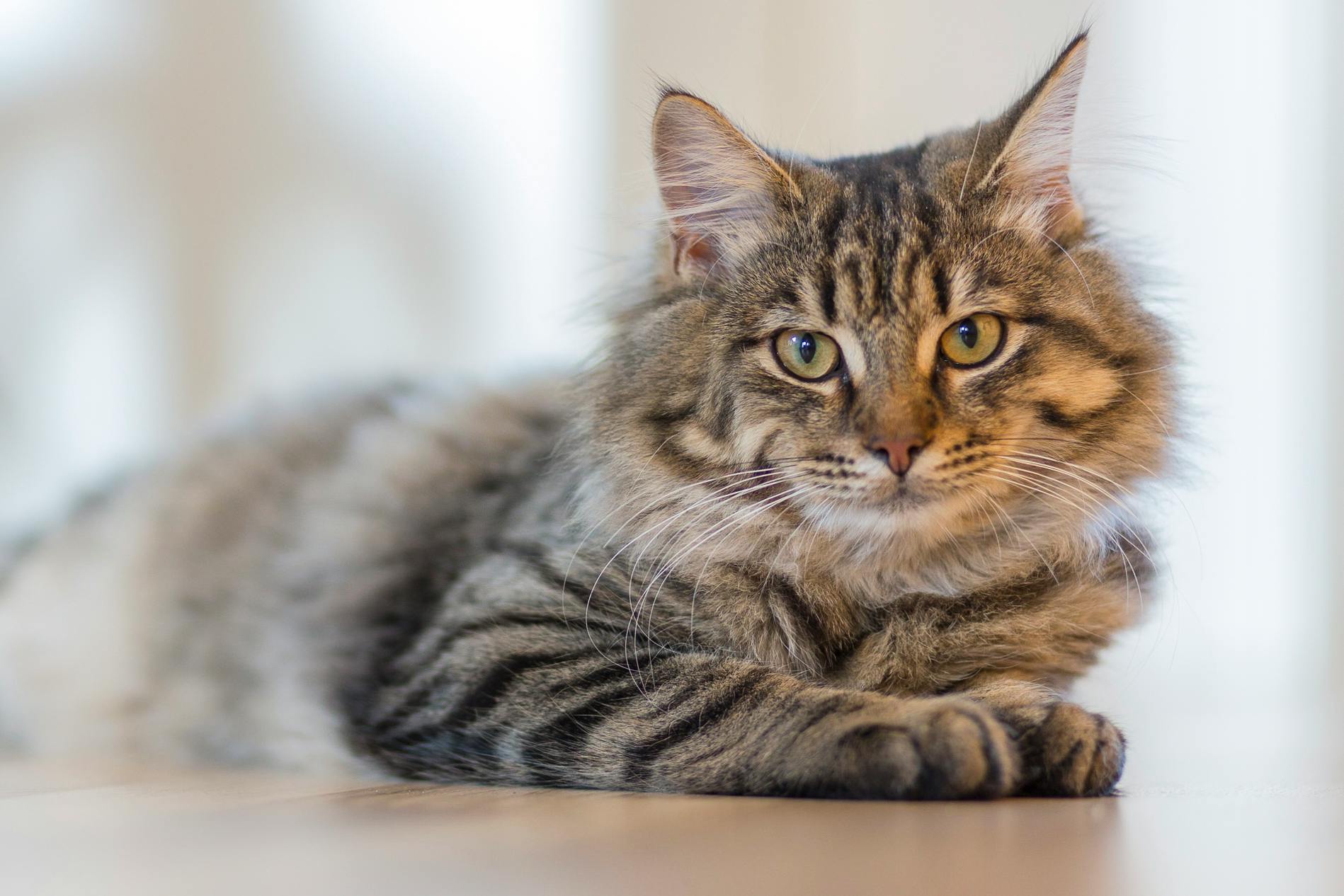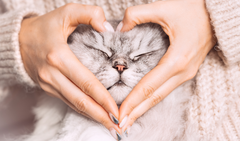Origins of the Siberian Cat
The Siberian cat, also known as the Siberian Forest Cat or Moscow Semi-Longhair, is Russia's national animal and has a rich history dating back centuries in the dense forests of Siberia. The earliest known mentions of this ancient breed can be traced back to 1000 AD. These native forest cats are a natural variety, or landrace, developed in response to the harsh Russian climate. While written historical records are limited, their presence in Russian fairy tales and children's books for hundreds of years speaks to their long-standing place in Russian culture. The breed's existence outside of Russia was first documented in the mid-19th century, with mentions in German and English texts. They were initially referred to by names like "red Tobolsk cat from Siberia" or "Russian Long-haired Cat". The formal recognition and development of breed standards began in the late 1980s, following a second introduction of these cats to the world after the dissolution of the Soviet Union. The breed gained full recognition for registry and championship status with major cat breeds registries by 2006. We can see their history reflected in their robust health and adaptability.

Physical Characteristics of the Siberian Cat
The Siberian cat is a medium to large-sized feline breed with a powerful and muscular build. They possess strong hind legs and large, well-rounded paws, making them exceptionally agile jumpers. Their bodies are often described as round, with a broad forehead and a full, rounded muzzle. One of the most defining features of the Siberian is its dense, triple coat, which is well-developed and semi-long to long. This unique triple-layered coat consists of guard hair, awn hair, and down hair, providing excellent protection against extreme weather conditions. The guard hairs are water-repellent, enhancing their resilience to the elements. Siberian coats exhibit a wide variety of coat colors and patterns, including tabby, solid, tortoiseshell, and bicolor, and all colorations can be combined with golden and silver factors. Their eyes are typically large and round, contributing to their sweet expression, and can come in various colors, though transparent colors are preferred. Interestingly, their hind legs are slightly longer than their front legs, creating a slight arch in their back, aiding their impressive jumping ability. They also possess a striking bushy tail proportionate to their body, which can be used for warmth in cold winter months. The color pattern can be quite complex, with a basic color and a ground color ranging from brilliant to pale or even a ground color rich golden. The body color, creamy or body color pale cream, can be a beautiful contrast to darker markings. Some exhibit lighter shading or body shading, while others may have dorsal shading. The combination of colors and patterns is vast, including dark color edges and darker color variations. The dilute color range is also possible, leading to softer hues. A cat with color confined to specific points is also possible, though less common than in breeds like the Siamese.
Temperament and Personality
Siberian Forest Cats are known for their friendly, affectionate, and outgoing personalities. They are highly intelligent and playful, often retaining their kitten-like behavior for up to five years. Their playful nature means they enjoy exploring and climbing, so providing them with high places to perch is beneficial. Their high energy levels make them engaging companions who thrive on interaction and play. This breed is also recognized for its dog-like loyalty and can even learn to play fetch. They are generally very social and enjoy being involved in household activities. Siberian cats are also noted for their vocal nature, not in terms of loudness, but in the variety of sounds they produce, including a melodious chirping voice and a deep purr. Their water-repellent coat means they are often fascinated by water and may not mind getting wet. Their playful antics and affectionate nature make them a joy to have in the home.

Care and Grooming Needs
Caring for a Siberian cat involves regular grooming to manage their thick triple coat and minimize shedding. While their Siberian coats are somewhat mat-resistant, occasional brushing is necessary, especially during shedding seasons when they shed their heavy winter coat. They shed their winter coat in the spring and may have a less intense "mini-molt" in late summer to prepare for the winter. Brushing helps remove loose hair before it ends on furniture and clothing. During the cooler summers, they will sport a less dense summer coat. Occasional baths can also help with loose hair and keep their coat free of dust and dander, and some Siberians even enjoy water. Regular nail trimming is essential, and scratching posts should be provided but are not a substitute for trimming. Their ears should also be checked regularly for dirt and debris and cleaned gently when necessary. Giving them this extra care ensures their coat remains healthy and beautiful.
Health Considerations
As a natural landrace breed, the Siberian is generally considered a healthy breed and exhibits a high degree of genetic variation. We consider them a healthy cat breed with a robust constitution. However, like all cat breeds, they can be prone to certain hereditary diseases. Some conditions that have been observed in Siberian cats include hypertrophic cardiomyopathy (HCM), a form of heart disease; erythrocyte pyruvate kinase deficiency (PK deficiency), which can cause anemia, and polycystic kidney disease (PKD), an inherited kidney condition. Responsible breeding pairs are screened for these genetic conditions to avoid passing them on. While the Siberian breed has a relatively low overall morbidity risk compared to other purebreds, they have a higher incidence of injuries, likely due to their active and adventurous nature. Locomotor and female reproduction-related conditions also show a higher incidence rate in Siberians. We are mindful of these potential disease risks and work to maintain the breed's health through careful breeding practices.

The Hypoallergenic Trait
Many individuals with cat allergies can tolerate Siberian Forest Cats, as the breed is often called hypoallergenic. This is believed to be because Siberians may produce less of the Fel d 1 protein, a primary allergen found in cat saliva and skin. When cats groom themselves, this protein is transferred to their fur. While no cat breeds are genuinely 100% hypoallergenic, studies and anecdotal evidence suggest that Siberians have lower levels of this protein compared to many other feline breeds. Their d1 allergen levels are often lower, making them a more suitable companion for some allergy sufferers. It is important to note that individual reactions can vary, and allergic individuals are often advised to spend time with Siberian cats before bringing one home to assess their sensitivity. Some research indicates that about half of Siberians have lower Fel d 1 levels than other cat breeds, with a smaller percentage having very low levels. Interestingly, male and female Siberians have comparable fur allergen levels within the low-allergen group. We understand the importance of this trait for many potential owners.
Coat Colors and Patterns in Detail
Delving deeper into the coat colors and patterns of the Siberian cat reveals a fascinating array of possibilities. Beyond the basic solid and tabby patterns, we see a spectrum of shades and markings. The tabby pattern has variations, including the classic mackerel tabby with parallel stripes. We can observe dark cream tabby markings and darker blue-gray tabby markings. Some cats may have a broken mackerel pattern, where the stripes appear as spots. The distribution of color on the stomach of tabbies can also vary. The bushy tail can also display striking patterns, with the base of the tail silver or the entire tail silver white in some variations. We might see black tipping on the fur or a blaze of cream tipping. Ear tipping is also a common feature in some patterns. The brown tabby is a classic example of the breed's natural coloration. While some cat breeds like the Maine Coon share some physical similarities, the Siberian's unique coat genetics set it apart. The complexity of their coat colors and patterns is a testament to their natural development in the cold forests of Siberia. We appreciate the beauty and diversity found within Siberian coats.




















